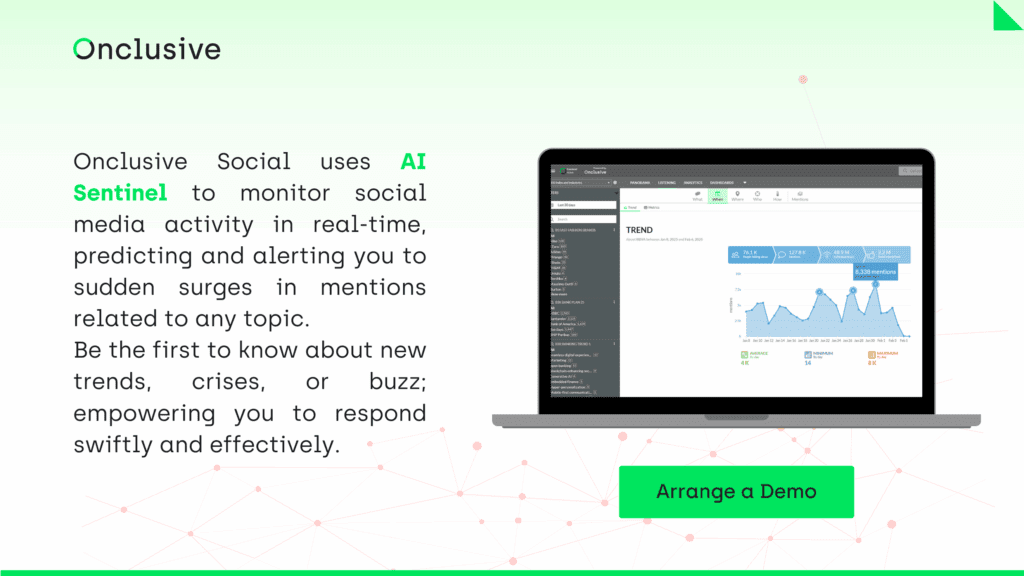Social media is more than just a tool for visibility—it’s a battleground for trust, influence, and brand resilience. With platforms under increasing scrutiny over misinformation, AI-generated content, and algorithm-driven echo chambers, brands can no longer afford to take a passive approach. Audiences are more sceptical, engagement is harder to earn, and authenticity is now a business imperative.
Definition: A social media strategy is a plan that defines how you’ll use social platforms to achieve specific goals, identifying which networks to use, what content to post, and who your target audience is. It ensures your social media efforts are purposeful and consistent rather than random, aligning all activities with your broader business or personal objectives. Key elements include setting measurable goals, planning content, defining your brand voice, and tracking performance metrics to measure success.
Worldwide, in 2024, Facebook is the No. 1 social media channel for B2C marketing: 51% of marketers use Facebook, but also 33% for B2B (the platform is falling sharply, as it was 94% and 85% respectively in 2021!). LinkedIn is the 1st channel used in B2B with 44% of marketers.
Instagram is the 3rd social media channel used: 30% for B2C and 17% for B2B marketers.
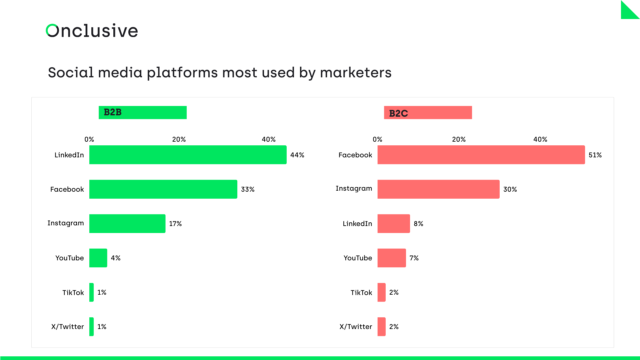
The social media platforms most used by marketers: B2C vs B2B in 2024 (USA, Canada, UK, Australia, India and European Union). Source: Social media examiner
The smartest brands aren’t just using social media to be seen—they’re using it to create meaningful impact, foster genuine connections, and navigate an increasingly complex digital landscape. That means adapting to new regulations, leveraging real-time insights, and ensuring every post, reply, and campaign adds value.
Let’s explore the key objectives that should shape your social media strategy in 2025.
Table of Contents:
I. Increase brand visibility where it matters
II. Grow a community that engages, not just follows
III. Turn followers into brand advocates
IV. Improve customer experience through social listening
V. Convert engagement into sales-ready leads
VI. Implementing Dynamic Performance Monitoring
I. Increase brand visibility where it matters
Brand awareness isn’t just about how many people recognise your logo—it’s about being seen in the right places, by the right audience, at the right time. Social media plays a crucial role in positioning your brand as an authority in your industry and shaping public perception.

Measurement of brand awareness by mentions and associated KPIs (via Onclusive Social)
II. Grow a community that engages, not just follows
A high follower count looks good on paper, but real success comes from an engaged community that actively interacts with your brand. In 2025, audiences expect more than promotional posts—they want meaningful content, direct responses, and a reason to stick around.
Building an engaged community means creating conversations, encouraging user-generated content, and leveraging social listening to understand what your audience cares about. It’s about making social media a two-way street.
Key metrics:
- Follower growth rate: Not just how many, but how quickly your audience is expanding.
- Engagement rate: Likes, comments, shares, and saves—how often users interact with your content.
- Active community members: The percentage of your audience engaging consistently.
- Social traffic to owned channels: Visits from social platforms to your blog, website, or app.
- Share of voice of communities: Number of fans and subscribers compared to those of your competitors.
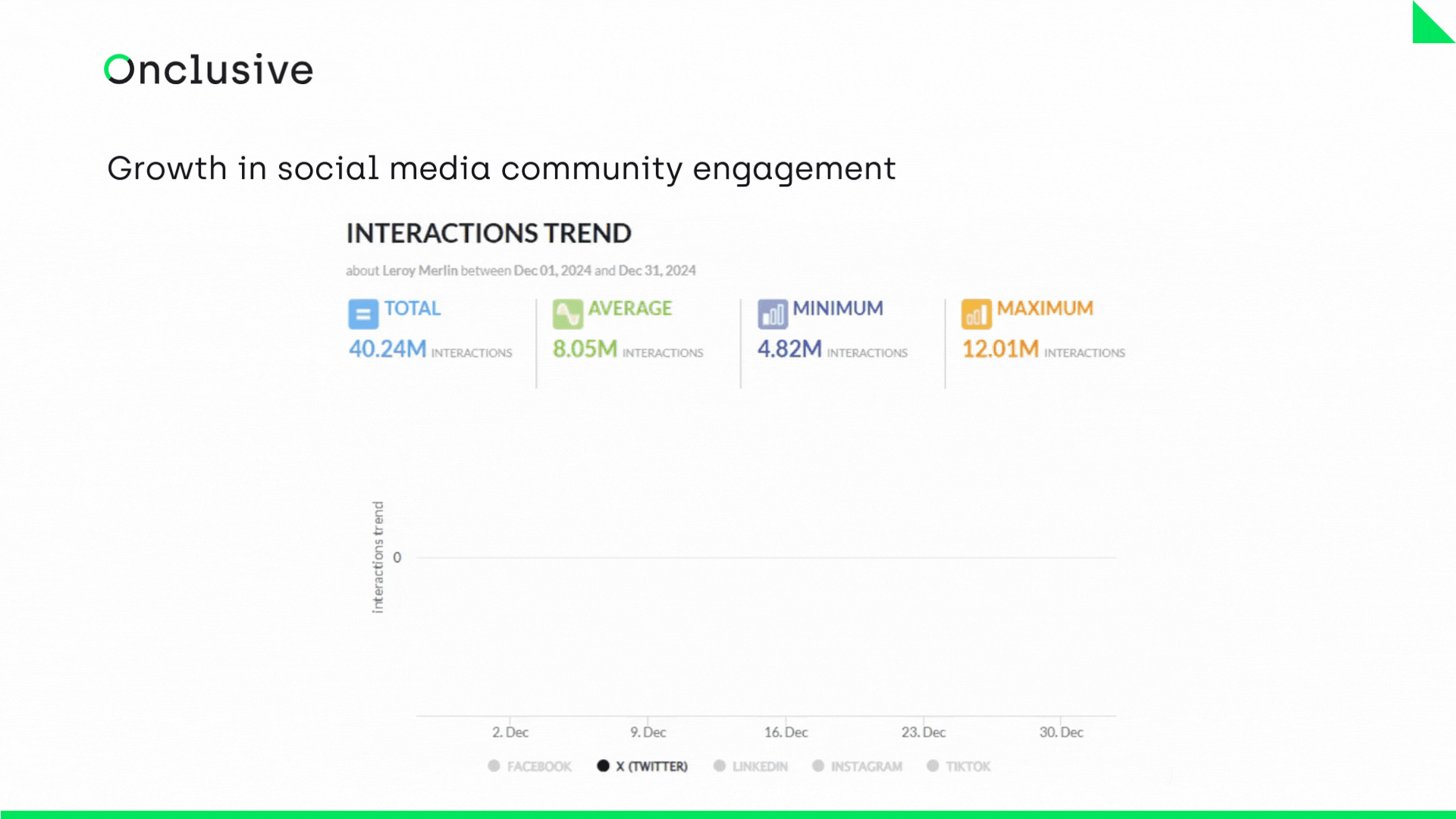
Growth in social media community engagement (via Onclusive Social)
III. Turn followers into brand advocates
Brand loyalty is built through engagement, and the best social strategies go beyond marketing—they create brand advocates. In 2025, brands are focusing on fostering deeper relationships with their most engaged followers, turning them into ambassadors who share and promote content organically.
This means identifying and nurturing key voices within your community—whether they’re influencers, loyal customers, or employees—who can amplify your message in an authentic way.
Key metrics:
- User-Generated Content (UGC): How often customers create content about your brand.
- Influencer & ambassador engagement: The number of interactions from brand advocates.
- Repeat interactions: How often the same users engage with your brand over time.
- Publication performance: Number of posts generating interactions above a certain number (to be defined), engagement rate per publication.
- Influencer population: Number of new influencers – ambassadors. % in target population.
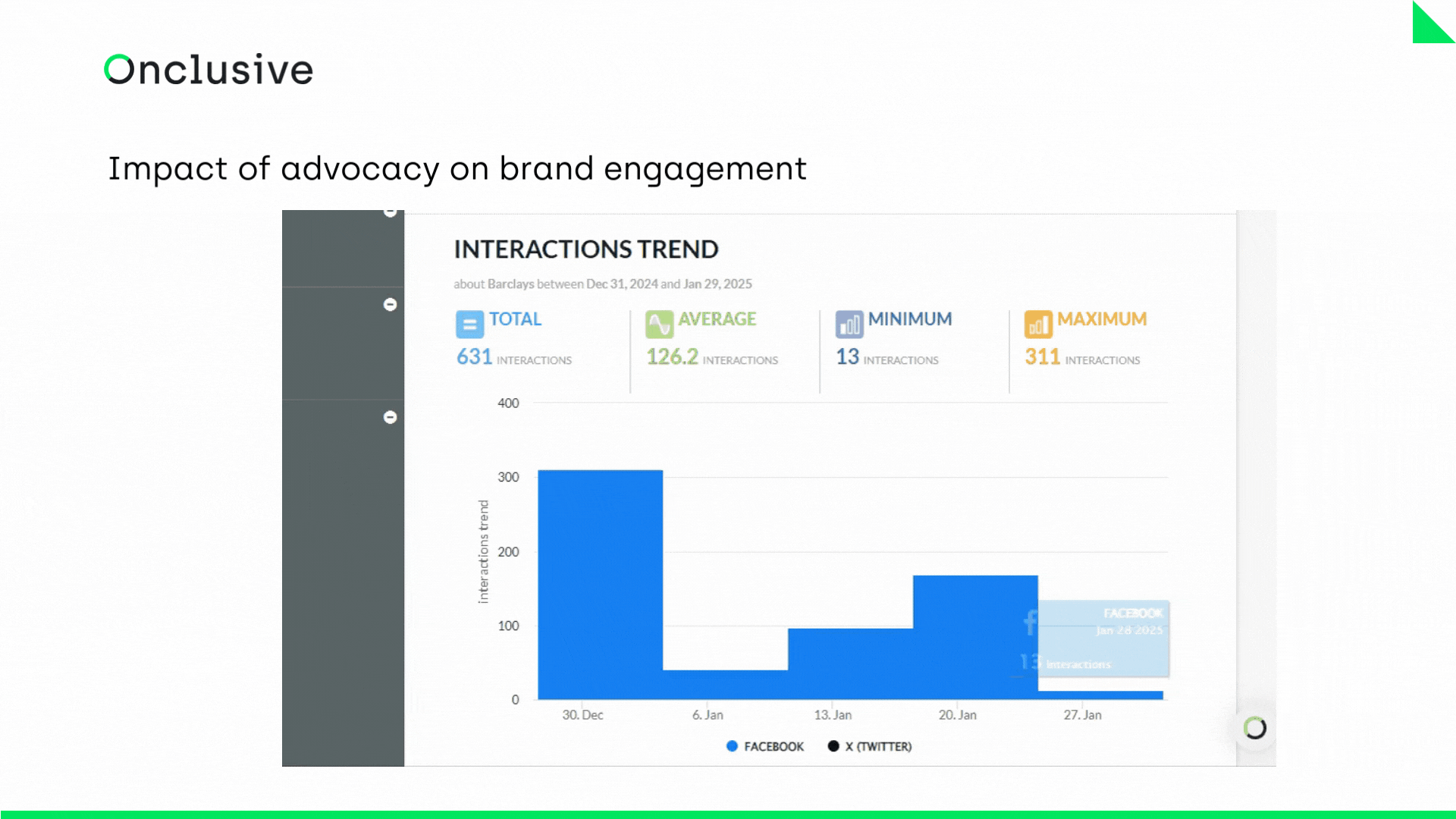
Impact of advocacy on brand engagement: Measurement of publications generating the most engagement (via Onclusive Social)
IV. Improve customer experience through social listening
Social media has become a critical touchpoint for customer service. In 2025, brands that actively listen and respond to customer concerns in real time will build stronger trust and long-term loyalty. A great social strategy relies on paying attention to what customers are saying and acting on that insight.
Social listening allows brands to track sentiment, spot trends, and even prevent PR crises before they escalate. More importantly, it helps businesses improve products and services based on real-time feedback.
Key metrics:
- Response time to inquiries: How quickly customer concerns are addressed.
- Resolution rate: The percentage of customer issues resolved through social channels.
- Sentiment analysis: The balance of positive vs. negative conversations about your brand.
- Customer feedback trends: Recurring themes in customer concerns and suggestions.

Customer satisfaction metrics on social media (via Onclusive Social)
V. Convert engagement into sales-ready leads
Social media isn’t just about building awareness—it should also feed into your wider sales funnel. The challenge is turning engagement into real business impact, by driving potential customers toward meaningful actions, whether that’s signing up for a demo, downloading a resource, or making a purchase.
With the right content strategy, brands can guide social media users from awareness to conversion, using targeted campaigns, personalised interactions, and lead-generation tools.
Key metrics:
- Social-driven leads: The number of leads generated from social platforms.
- Conversion rate from social traffic: How often social visitors take a desired action.
- Customer journey insights: Tracking how social media touchpoints influence purchasing decisions.
- Return on Investment (ROI): The revenue generated from social media efforts.
Bringing it all together
A successful social media strategy in 2025 is about much more than just posting content. The brands that thrive will be those that take a data-driven approach—tracking what works, optimising in real time, and focusing on long-term impact over short-term engagement.
By setting clear objectives and measuring the right metrics, businesses can move beyond vanity metrics and turn social media into a key driver of growth.
6. Implementing Dynamic Performance Monitoring
Understanding customer satisfaction requires more than just collecting data—it demands an integrated, real-time approach to measurement and analysis. At the heart of this modern approach lies the implementation of interactive dashboards, serving as central hubs where satisfaction metrics converge and evolve continuously. These sophisticated monitoring systems transform raw data into actionable insights, enabling organizations to not only track current performance but also anticipate future trends.
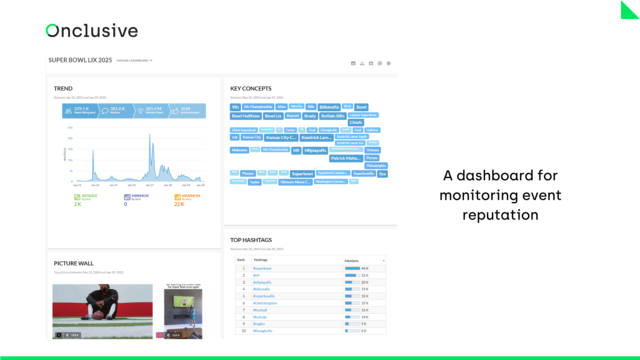
A dashboard for monitoring event reputation
The dashboard’s real-time capabilities represent a significant advancement over traditional periodic reporting methods. By consolidating data streams into a single, dynamic interface, organizations can observe patterns as they emerge, rather than discovering them weeks or months later. This immediacy empowers teams to conduct two critical types of analysis: predictive assessment to forecast potential challenges before they materialize, and corrective evaluation to address existing issues with precision and speed.
Through this systematic approach to monitoring and analysis, organizations can maintain a proactive stance in managing customer satisfaction, turning data into a powerful tool for continuous improvement.”
This reformulation expands on the original concepts while providing more context about why these tools and approaches matter, helping readers better understand their significance in the broader context of customer satisfaction management.
Ready to take your social media strategy to the next level? Don’t wait to enhance and support your Social Listening analyses with artificial intelligence-powered functions.


